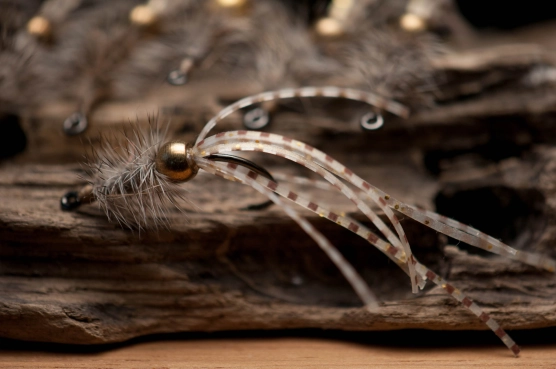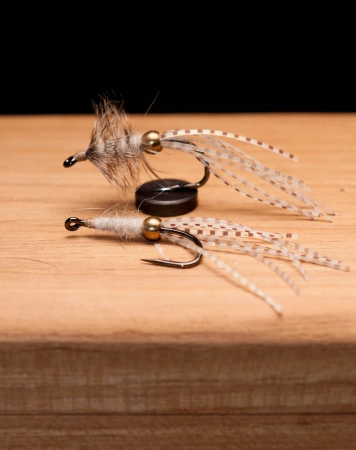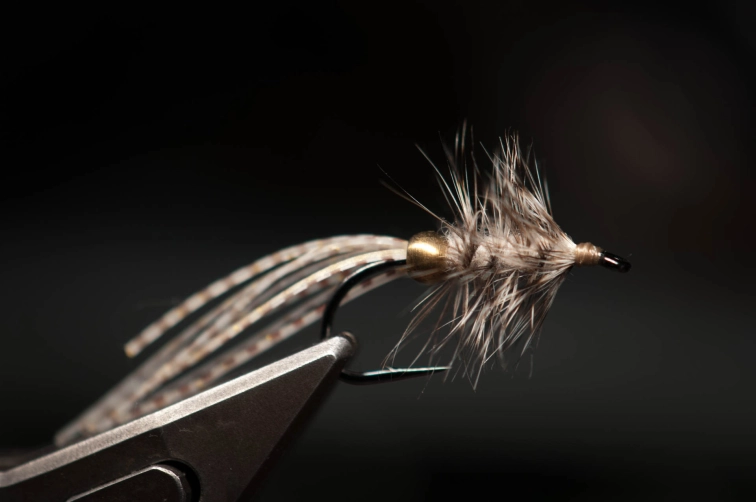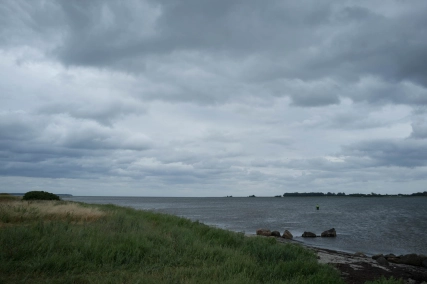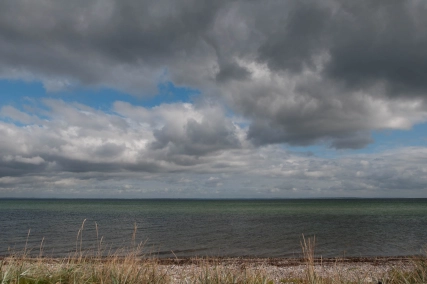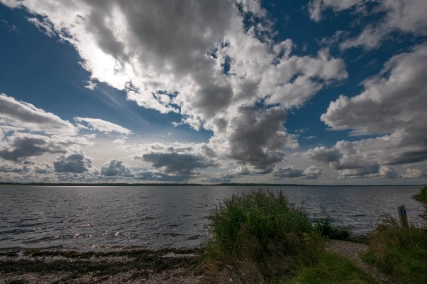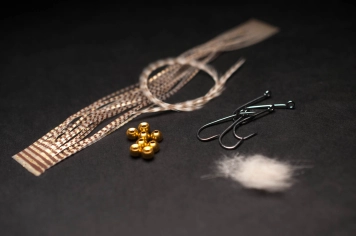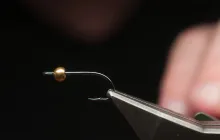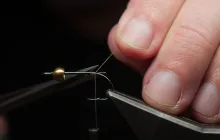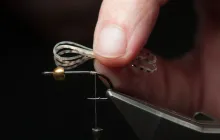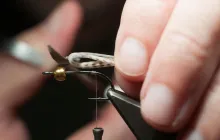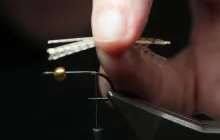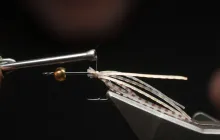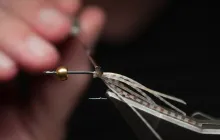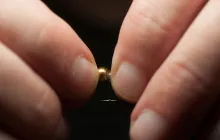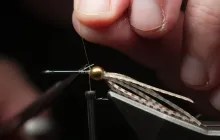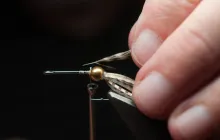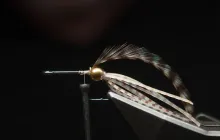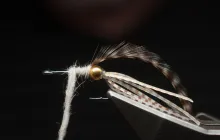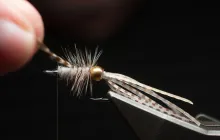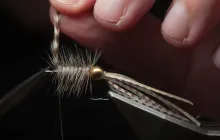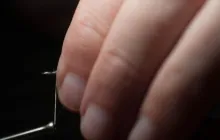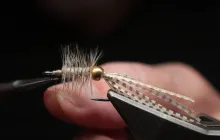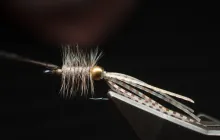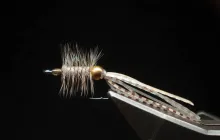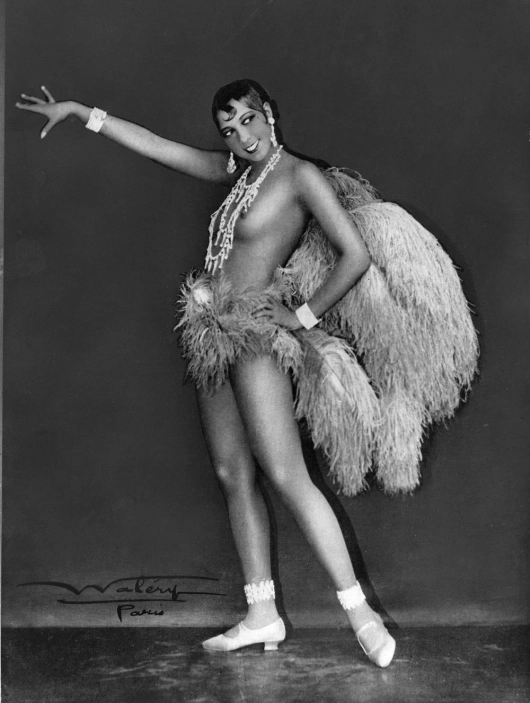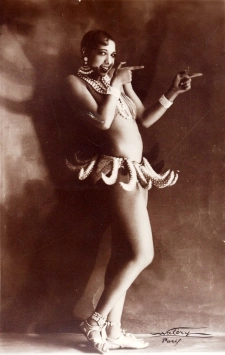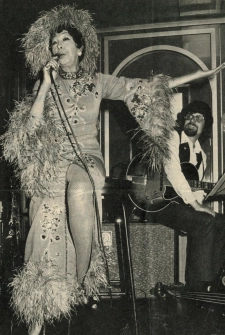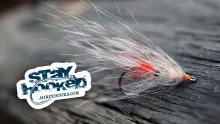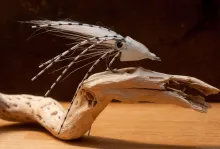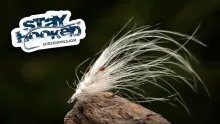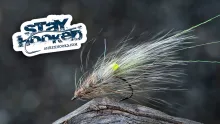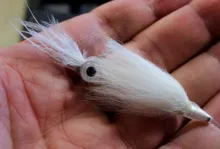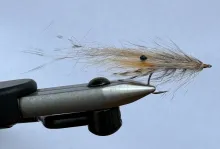This fly was originally a colorful bream fly from the southern US called Bead Butt or Jennifer Lopez. I transformed it to fit my needs and named my version Josephine Baker
Originally this fly was tied with bream in mind. Now, bream isn’t just bream. This name is used for a large variety of fish all over the world, but in this particular case it’s the common name for a group of smaller freshwater fish found in ponds and lakes in US, which includes bluegill among other species. The fly hails from Georgia in the southern US where it was made for these small panfish by Kent Edmonds. The original is shown on his site Flyfish GA.
Kent called it the Bead Butt or Jenifer Lopez.
I found the pattern when posting a video by Scottish Martyn White in the video section, and found its simplicity enticing, and immediately thought that it could easily be converted to something useful for sea trout – our local sea run brown trout.
A larger hook and slightly more subdued colors, and the fly would become quite “shrimpy” or even “squiddy”, nicely imitating the small squids that in increasing numbers appear in our local waters, and are eaten willingly by the sea trout, especially in the early spring.
The first versions of the fly I tied on a size 4 hook using a brass bead, tan/gold rubber legs and some tan dubbing. I found the first and simplest versions a little skinny, and decided to add a hackle to the front part of the fly, and this addition made it look very much like a small squid, the shiny brass bead easily standing in for eyes and the hackle imitating the mantle and fins.
The original fly was much more colorful, tied in yellow and chartreuse, some with brighter and more colorful beads. Thinking of the success that some of the more colorful patterns have had on the Baltic coasts, I decided to also experiment with versions using brighter colors like chartreuse and orange.
I can’t in any way postulate that the fly has brought me immense success in my pursuit of sea trout, but that is most likely due my fishing intensity – or lack of same – more than the efficiency – or lack of same – of the fly.
It’s close to a perfect sea trout flies in my eyes.
It has the shape and the colors that I want, shrimpy, squiddy as I wrote above.
It has weight thanks to the bead, and penetrates the surface readily and sinks at a decent speed.
The rubber legs do what rubber legs do best: wiggle and move in mysterious ways.
The fly is not too heavy to cast on a 5-6-7 weight rod and it’s basically trouble free when casting and fishing.
The bead tarnishes a bit when exposed to salt water, but if replaced with a colored bead, or varnished before the fly is finished, it stays shiny and attractive a lot longer.
And it’s a very easy and undemanding tie. The only problem can be to find the proper bead and hook combination. If you want a hook in size 6 or 4, you need a bead that has enough clearance to pass the hook bend, which also can’t be too narrow. I found several combinations of hooks and beads in my boxes, which worked – but even more where the bead could not clear the barb or the bend unless the bead was selected in a too large and too heavy size. Thin wire and a hook with an open and round bend is the best bet in hook choice if you want to keep the bead size down.
Rubber legs are easy to find in many colors and patterns, and a little tan dubbing and a grizzly hackle finishes the materials list. All are cheap and easy to find materials.
The original fly is tied with the rubber legs “midships” just covering the hook point. This was done to eliminate the fish nipping the legs and not finding the hook. In sea trout fishing that’s rarely a problem, so I have used a shorter shank hook and moved the bead to the rear, to just where the hook bend starts. I also leave the legs fairly long in order to keep the looks of a shrimp or squid. They can of course be tied shorter or trimmed if you fear fish nibbling the rubber legs and not striking the hook point.
After all these modifications I decided to rename the fly to Josephine Baker, both because the rubber legs reminded me of her famous banana skirt, and because I found a cool picture of her singing – backed by my late father on guitar.
But of course traits of the original J-Lo are still obvious in my fly, and I’m in no way claiming this to be original. Inspired for sure, but different enough to deserve its own name.
Tying instructions
|
|
|
|
|
|
|
|
|
|
|
|
|
|
|
|
|
|
|
|
|
|
|
|
|
|
|
|
- Log in to post comments

